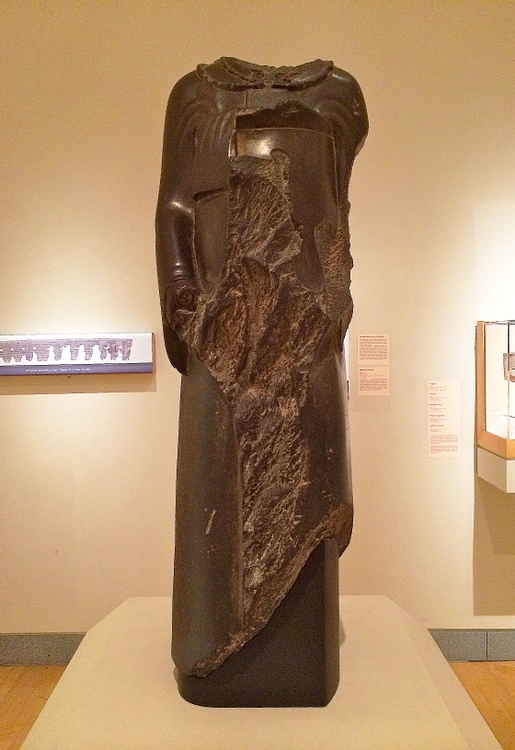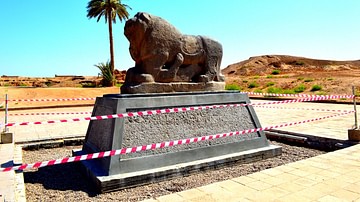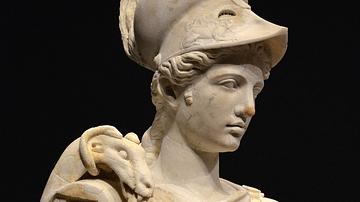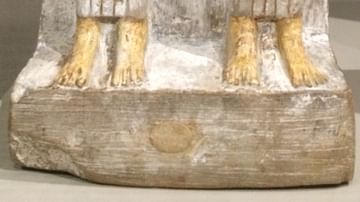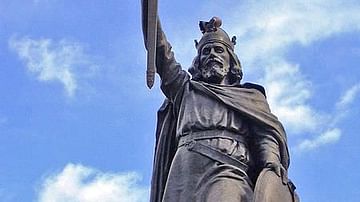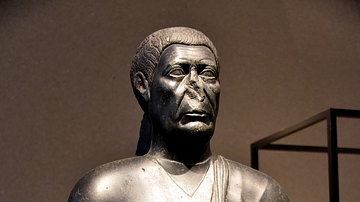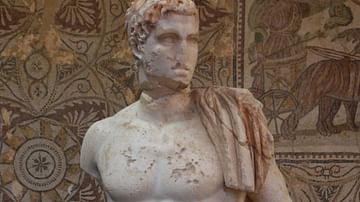Server Costs Fundraiser 2024
Illustration
This statue of Ptahhotep (who was the Overseer of the Treasury) is shown in a Persian costume that Egyptian officials adopted when Egypt was under Persian control. The jacket with flaring sleeves, over which a skirt is wrapped, is complemented by a Persian bracelet and torque (a bar-like necklace) as well as by an Egyptian pectoral, or chest plaque. These accessories give Ptahhotep the overall appearance of an Egypto-Persian official, one whose dress speaks clearly of his loyalty to the Persian king and the Persian court. The rendering of the two ibexes that terminate the torque, however, is typically Egyptian, with the heads shown from the side. This treatment, together with the pectoral showing Ptah and the lion-headed goddess Sekhmet, underscores the essentially Egyptian nature of the statue. The statue dates from the late period of Early Dynasty XXVII, which corresponds to the First Persian Period (c. 525-404 BCE). The statue is probably from Memphis, Egypt and was made from graywacke. (Brooklyn Museum, New York)
About the Author
Cite This Work
APA Style
Wiener, J. B. (2017, November 08). Statue of the Egypto-Persian Ptahhotep. World History Encyclopedia. Retrieved from https://www.worldhistory.org/image/7583/statue-of-the-egypto-persian-ptahhotep/
Chicago Style
Wiener, James Blake. "Statue of the Egypto-Persian Ptahhotep." World History Encyclopedia. Last modified November 08, 2017. https://www.worldhistory.org/image/7583/statue-of-the-egypto-persian-ptahhotep/.
MLA Style
Wiener, James Blake. "Statue of the Egypto-Persian Ptahhotep." World History Encyclopedia. World History Encyclopedia, 08 Nov 2017. Web. 26 Jul 2024.

